According to Grand View Research, The AI market was valued at $136.55 billion in 2022 and is expected to grow at a CAGR of 37.3% from 2023 to 2030. If you are an entrepreneur then what is stopping you from making an AI app now?
Artificial Intelligence (AI) has revolutionized the way we interact with technology. From chatbots to predictive analytics, AI has found its way into many aspects of our daily lives. According to Fosshub, AI prompt engineering is already a career choice where you can make high five figures. Here, I will guide you through the process of making an AI app, step by step. We’ll discuss the basics of AI, choosing the right framework, designing the user experience, building your app, testing, and deploying. So, let’s dive in!
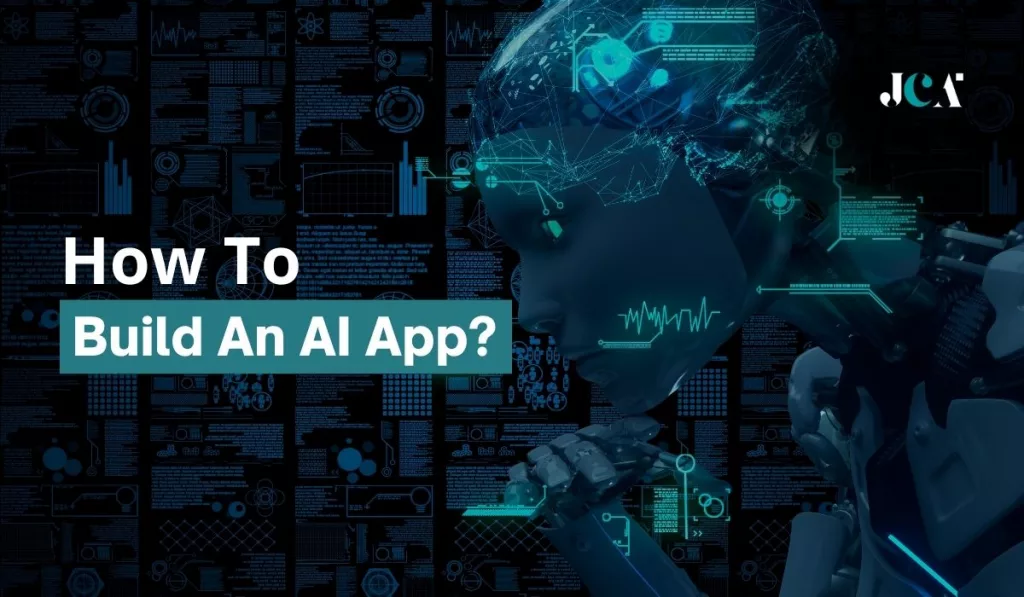
What is Artificial Intelligence (AI) App?
An Artificial Intelligence (AI) App is a software application that integrates advanced AI technologies, such as machine learning, natural language processing, or computer vision, to provide intelligent, data-driven solutions and enhance user experiences. AI apps can automate tasks, analyze patterns, make predictions, and offer personalized recommendations, streamlining processes and improving user engagement across various industries and platforms.
Now we can see there are several AI innovations taking place every day. From ChatGPT to AutoGPT, Bing AI to Midjourney, such software has upgraded our lives.
Before we begin, it’s essential to have a basic understanding of AI and its various types and applications.
Types And Applications of Artificial Intelligence in Making App
There are several types of AI, including machine learning, deep learning, and natural language processing. Each type serves different purposes and requires different techniques and algorithms.
AI has various applications, such as virtual assistants, recommendation systems, image recognition, and more. When creating your AI app, consider which application best suits your needs and goals.
What are the benefits of building an AI app for business?
Developing an AI app for business can offer numerous benefits that can help streamline operations, increase efficiency, and drive growth. AI technology can help automate routine tasks, make accurate predictions, and provide valuable insights into customer behavior, market trends, and business operations. Here are some of the key benefits of developing an AI app for business:
1. AI app helps in task automation
With AI technology, businesses can automate repetitive tasks, such as data entry, customer support, and inventory management. This can save time, reduce errors, and free up employees to focus on more complex tasks.
2. Helps in improved decision-making
AI can help businesses make data-driven decisions by analyzing vast amounts of data, identifying patterns, and making accurate predictions. This can lead to better outcomes and improved performance.
3. AI app offers more personalization
AI can help businesses personalize their products and services by analyzing customer behavior, preferences, and purchase history. This can lead to increased customer satisfaction, loyalty, and sales.
4. Reduces overall costs
By automating tasks and improving efficiency, businesses can reduce costs and increase profitability. AI can also help businesses identify areas for cost savings and optimization.
5. AI app helps the business gain a competitive advantage
Businesses that leverage AI technology can gain a competitive advantage by offering innovative products and services, improving customer experiences, and optimizing operations.
6. You can easily scale with the help of an AI App
AI can help businesses scale their operations by automating tasks and improving efficiency. This can help businesses keep up with growth and expansion.
Also have a look at GDPR vs AI – War or Harmony
What are the challenges in developing an AI app?
Developing an AI app can be an exciting and rewarding endeavor, but it is not without its challenges. AI app development requires expertise in various fields, including data science, software engineering, and machine learning. Let’s explore some of the challenges that developers face when creating AI apps.
1. Data quality and availability
One of the most critical aspects of developing an AI app is the quality and availability of data. AI models require large amounts of high-quality data to train and improve their accuracy. However, obtaining such data can be challenging, particularly for niche applications. Moreover, data quality can be compromised by various factors, such as data bias, noise, and missing values. To address this challenge, developers must employ robust data preprocessing techniques, such as data cleaning, feature engineering, and data augmentation, to improve the quality of the data.
2. Algorithm selection
Choosing the right algorithm for an AI app is critical to its success. However, selecting the right algorithm can be challenging due to the sheer number of options available. Moreover, different algorithms have different strengths and weaknesses, making it essential to choose an algorithm that is best suited for the specific task at hand. Developers must have a deep understanding of different algorithms and their applications to make the right choice.
3. Model Complexity
As AI models become more sophisticated, their complexity increases, making it challenging to optimize them for performance and efficiency. Complex models require more computational resources, making them more challenging to train and deploy. Moreover, as models become more complex, they become more challenging to interpret, making it harder to diagnose errors and improve their accuracy. To address this challenge, developers must employ techniques such as model pruning, quantization, and compression to reduce model complexity without compromising performance.
4. Performance optimization
AI app performance is critical to its success. Users expect AI apps to be fast, reliable, and accurate. However, optimizing AI app performance can be challenging due to the sheer complexity of the models involved. Developers must employ various optimization techniques, such as parallel computing, distributed computing, and GPU acceleration, to improve the performance of AI apps.
5. Explainability
As AI models become more complex, they become more challenging to interpret, making it harder to diagnose errors and improve their accuracy. Explainability is critical to building trust in AI apps and ensuring their ethical use. Developers must employ techniques such as model interpretability, bias detection, and fairness assessment to ensure that AI apps are transparent and explainable.
6. Ethical considerations
As AI apps become more prevalent, ethical considerations become more critical. AI apps can be used to automate decisions that can have significant impacts on people’s lives. Moreover, AI apps can be used to perpetuate biases and discrimination, making it essential to ensure that they are used ethically and responsibly. Developers must be aware of the ethical implications of their AI apps and employ techniques such as ethical design, bias detection, and fairness assessment to ensure that they are used responsibly.
7. Security and privacy
AI apps deal with sensitive data, making them a potential target for security breaches and cyber-attacks. Developers must employ robust security and privacy measures, such as encryption, access controls, and anonymization, to ensure that AI apps are secure and compliant with privacy regulations.
Step By Step Guide to Make An AI App
Time needed: 4 hours
Welcome to your ultimate step-by-step guide to making an AI app! Here, we’ll explore the exciting world of Artificial Intelligence and help you create a powerful, user-centric AI app that harnesses AI’s incredible potential. Together, we’ll navigate through the essentials of AI, frameworks, user experience design, app development, testing, and deployment. Get ready to unleash your creativity and transform your brilliant idea into a reality with this interactive and engaging guide on how to make an AI app!
- Step 1: Choose the Right AI Framework
To create an AI app, you’ll need a suitable framework. A framework provides the necessary tools, libraries, and functionalities to make AI development faster and more efficient. Some popular AI frameworks include TensorFlow, PyTorch, and Keras. Each framework has its own strengths and weaknesses, so choose one that aligns with your app’s requirements.
Consider factors like ease of use, scalability, available resources, and support when choosing a framework. Remember that your choice will impact your app’s overall performance and development time.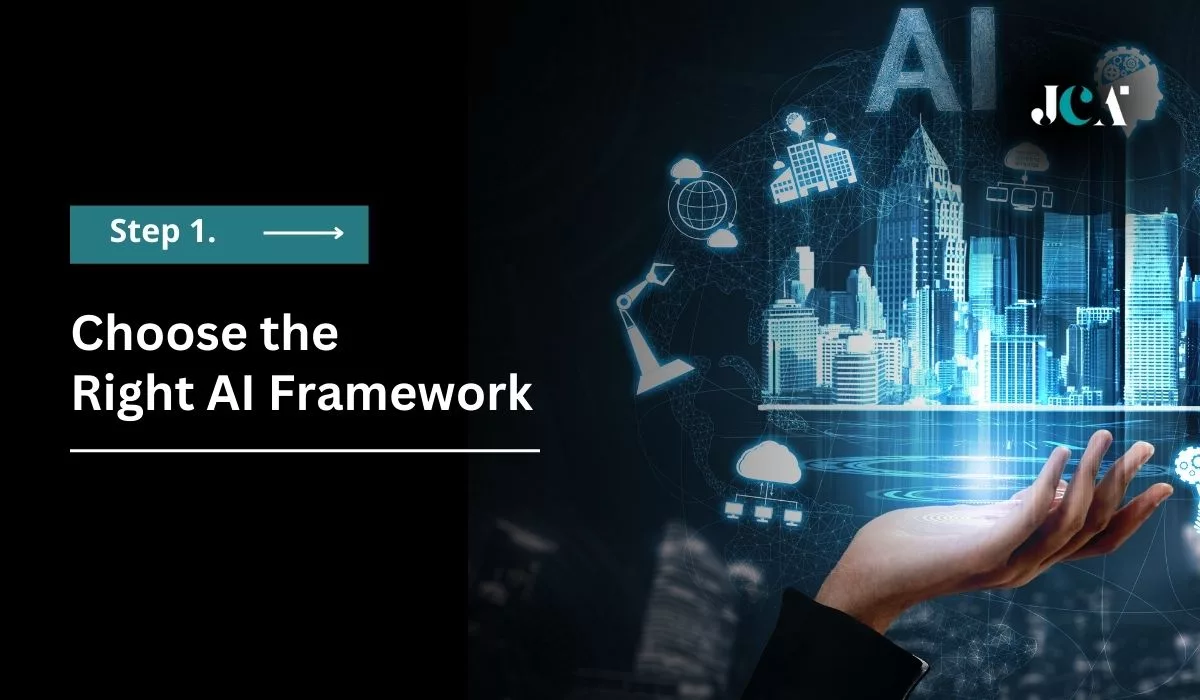
- Step 2: Develop Your AI App Idea
Before diving into development, it’s crucial to clearly define your app’s purpose and goals. Identify the specific problem your app aims to solve. This will help you focus on what’s important and make informed decisions throughout the development process. Outline your app’s goals and desired outcomes. This will give you a clear direction and help you prioritize tasks during development.

- Step 3: Design the User Experience
An AI app’s user experience is just as important as its functionality. Consider how users will interact with the AI and what features will best serve their needs. Identify which AI features you want to include in your app, such as chatbots, image recognition, or predictive analytics. Ensure these features align with your app’s goals and problem-solving strategy. Design a user-friendly interface that allows users to interact with the AI seamlessly. Consider elements like layout, visual design, and user flow to create an intuitive and engaging experience.

- Step 4: Gather Relevant Data
Data is the lifeblood of AI. Collect and preprocess relevant data to train your AI model. This may involve cleaning, normalizing, and augmenting the data to ensure its quality and usefulness.

- Step 5: Train the AI Model
Use your chosen framework to train the AI model with the preprocessed data. This process may involve adjusting hyperparameters, selecting algorithms, and evaluating performance.

- Step 6: Integrate the AI Model with Your App
Once the AI model is trained, integrate it with your app’s user interface and backend systems. Ensure smooth communication between the app and the model to provide users with seamless AI-powered experiences.
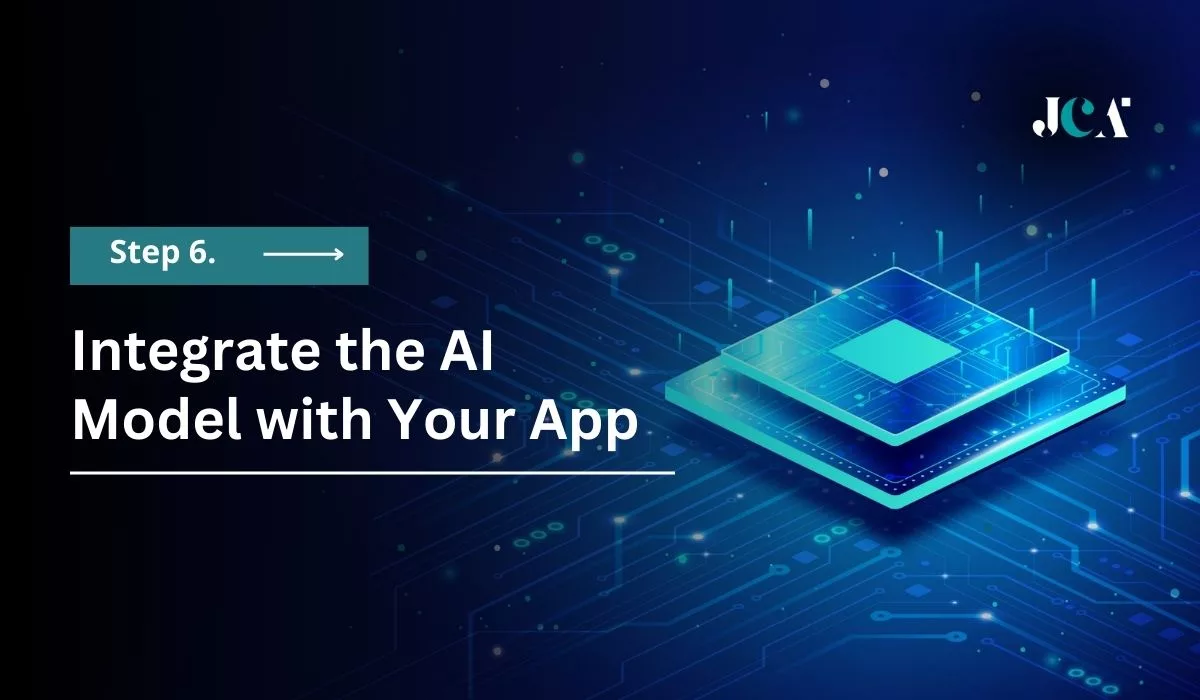
- Step 7: Test and Evaluate Your AI App
Before deploying your app, it’s crucial to test and evaluate its performance and functionality. Perform functional testing to ensure your app works as intended. Test each AI feature and interaction to identify and fix any issues or bugs. Evaluate your AI app’s performance, including response times, accuracy, and resource consumption. This will help you optimize the app for the best possible user experience.

- Final Step: Deploy and Continuously Improve
Once your AI app is tested and optimized, it’s time for deployment and ongoing maintenance. Choose a suitable deployment platform and launch your app. Monitor its performance and gather user feedback to make any necessary adjustments. Continuously monitor your AI app’s performance and user feedback to identify areas for improvement. Regularly update the app with new features, bug fixes, and performance enhancements to keep it relevant and competitive.

Examples of Artificial Intelligence (AI) Apps
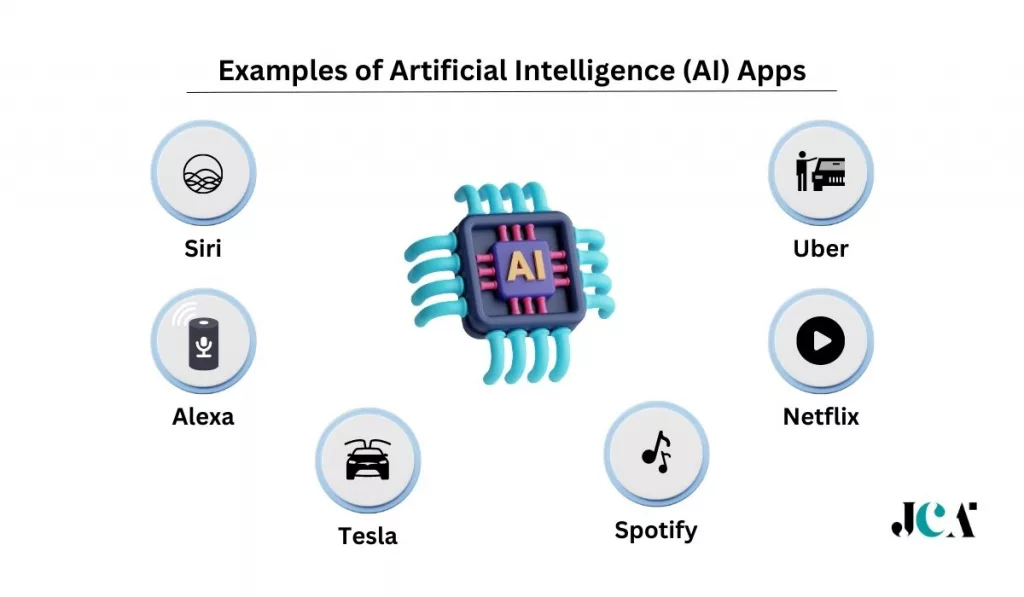
Artificial Intelligence (AI) has revolutionized the way we interact with technology. From virtual assistants to self-driving cars, AI has transformed various industries. Let’s explore the top 10 examples of AI apps and their uses.
1. Siri App
Siri is a virtual assistant that uses natural language processing and machine learning to perform tasks such as setting reminders, answering questions, and making calls.
2. Alexa AI App
Alexa is another popular virtual assistant that uses AI to perform tasks such as playing music, controlling smart home devices, and making purchases.
3. Tesla Autopilot
You must have heard it! right? Tesla Autopilot is a semi-autonomous driving system that uses AI to control the car’s steering, acceleration, and braking. This improves safety and reduces the risk of accidents.
4. Spotify
Spotify uses AI to recommend music based on user’s listening habits, preferences, and behavior. This helps users discover new artists and genres and improves the overall listening experience.
5. Netflix
Netflix uses AI to recommend movies and TV shows based on users’ viewing history, preferences, and behavior. This helps users discover new content and improves the overall viewing experience.
6. Grammarly
Grammarly uses AI to analyze written text and provide suggestions for grammar, spelling, and punctuation. This helps improve the quality of written communication.
7. Google Photos
Google Photos uses AI to organize and categorize photos based on people, places, and objects. This makes it easier for users to find and share their photos.
8. Duolingo
Duolingo uses AI to personalize language learning based on users’ skill levels, learning style, and performance. This helps users learn languages more efficiently and effectively.
9. Waze
Waze uses AI to provide real-time traffic updates, route suggestions, and navigation. This helps drivers avoid traffic and reach their destinations faster.
10. Uber
Uber uses AI to match riders with drivers based on location, availability, and user preferences. This improves the overall ride-hailing experience.
Also have a look at Google’s AI-Infused Tools Soon to Boost Efficiency in Gmail, Docs and More
Conclusion
Creating an AI app may seem daunting, but with a clear understanding of the process and the right tools, it’s an achievable goal. Follow this step-by-step guide, and you’ll be well on your way to developing a successful AI-powered app that solves real-world problems and delights users.




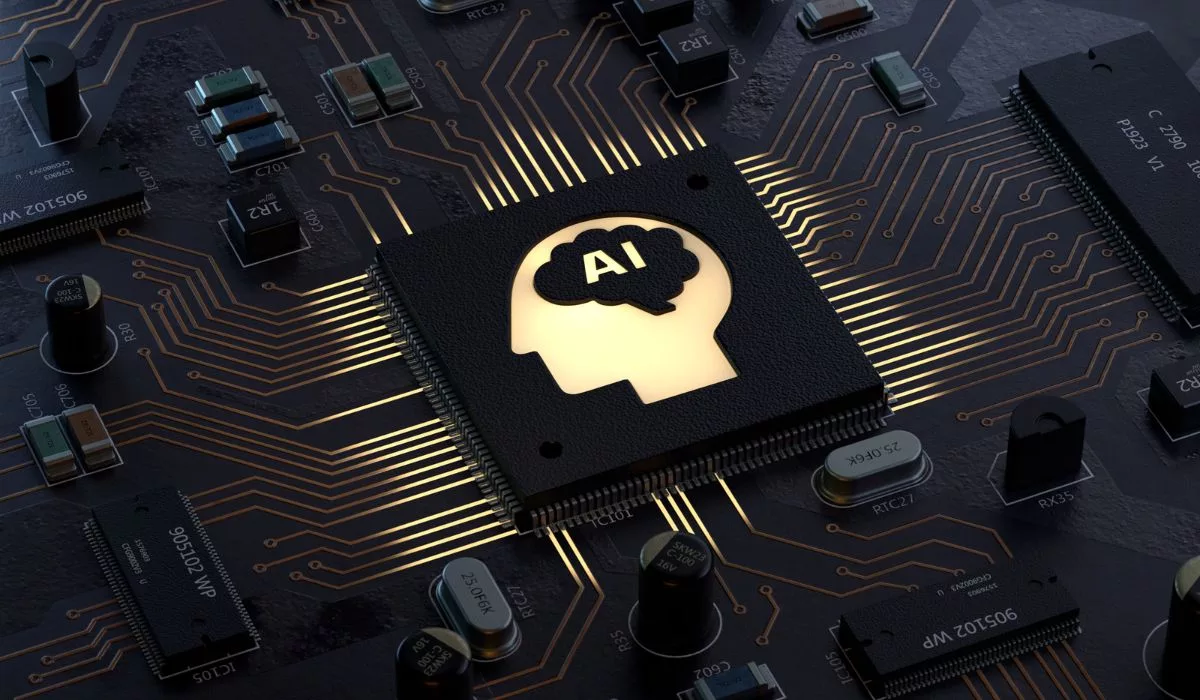





Leave a Reply